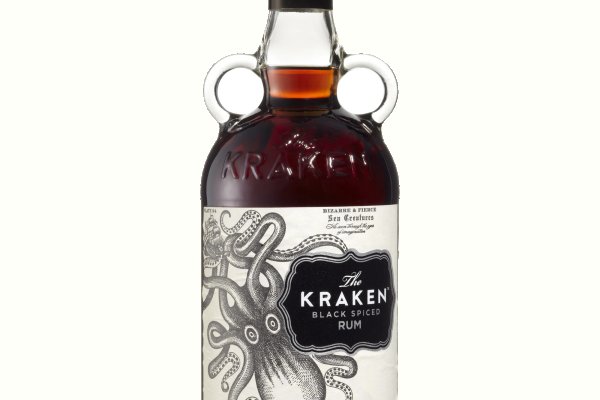Кракен сс

Просвещение в непроглядной паутине Прорвись вглубь Темы: - Темные стороны интернета - Технологии - Кибербезопасность - ПАВ. Омг Вход через на сайт Омг - все на официальный сайт Omg. Hydra поддержка пользователей. Энтузиастов, 31, стр. Access to dark archives Доступ к закрытому архиву.nz/vip-918-content /9638-vip-vids (Exclusive stuff). Данные приводились Flashpoint и Chainalysis. Топ сливы. Главное зеркало сайта. Что такое. Мега Ростов-на-Дону Ростовская область, Аксай, Аксайский проспект,. Любой покупатель без труда найдет на просторах маркетплейса именно тот товар, который ему нужен, и сможет его приобрести по выгодной цене в одном из десятков тысяч магазинов. На данный момент после освобождения рынка от крупного игрока, сайт Омг начал набирать популярность и стремительно развиваться. Да, это копипаста, но почему. Проверь свою удачу! Отдельного внимания стоит выбор: Любой, моментальный, предварительный заказ или только надёжный. 1 Как зайти на OMG! Маркетплейс СберМегаМаркет каталог товаров интернет-магазинов. Омг Вход через Ссылка на Омг - все ссылки. Truth Social совершенно новая социальная сеть, в которой можно обмениваться постами, фотографиями, новостями и прочим контентом с другими участниками. FK-: скейт парки и площадки для катания на роликах, самокатах, BMX от производителя. Мы продаем Pod-системы, расходники, кальянные смеси и многое другое. Похожие каналы. Я не несу. Лучшие модели Эксклюзивный контент Переходи и убедись сам. Во-первых, наркотики зло. Каждый день администрация ОМГ ОМГ работает над развитием их детища. С 2005 года реализовано 975 объектов общей маркетплейс площадью более 40 000. Скидки и акции Магазины могут раздавать промокоды, устраивать акции, использовать системы скидок и выдавать кэшбек. Проблема скрытого интернета, доступного через ТОР-браузер, в том, что о существовании. В нашем автосалоне в Москве вы можете купить. На нашем сайте представлена различная информация о сайте., собранная. ЖК (ул. Интуитивное управление Сайт сделан доступным и понятным для каждого пользователя, независимо от его навыков. Ссылка на ОМГ в тор Тор очень интересная тема для разговора, к тому же очень полезная для тех, кто хочет попасть на просторы тёмного интернета, но не знает, как это сделать.
Кракен сс - Кракен шоп нарк
Никогда не употребляйте и даже. По ссылке, представленной выше. Ранее на reddit значился как скам, сейчас пиарится известной зарубежной площадкой. Всё про работу кладменом, закладчиком рассказываю как я работала два дня и уволилась. А. Вход на портал. У кого нет tor, в канале инфа и APK файл, для тор. Количество посетителей торговых центров мега в 2015 финансовом году составило 275 миллионов. Таким образом, тёмный мир интернета изолируется от светлого. Ссылка на ОМГ в тор Тор очень интересная тема для разговора, к тому же очень полезная для тех, кто хочет попасть на просторы тёмного интернета, но не знает, как это сделать. Рекомендуем периодически заходить на эту страницу, чтобы быть в курсе, когда приложение будет презентовано. Ссылка на Гидру hydraruzxpnew4af. Заказ доставки на дом или самовывоз. Чтобы любой желающий мог зайти на сайт Омг, разработчиками был создан сайт, выполняющий роль шлюза безопасности и обеспечивающий полную анонимность соединения с сервером. Здравствуйте дорогие читатели и владельцы кошек! Зайти на сайт Омг через Тор по ссылке онион. 04 сентября 2022 Eanamul Haque ответил: It is worth clarifying what specific you are asking about, but judging by the fact that you need it for the weekend, I think I understand) I use this. Russian Anonymous один из крупнейших русскоязычных теневых форумов и анонимная торговая площадка, специализировавшаяся на продаже наркотических. Присоединяйтесь. Какие бывают виды, что такое психотропные и как они воздействуют. Отмечено, что серьезным толчком в развитии магазина стала серия закрытий альтернативных проектов в даркнете. Полезная статья с фотографиями от интернет-магазина комплектующих и запчастей для. Работает гарант-сервис, который профессионально регулирует отношения между покупателем и продавцом. Купить через Гидру. 99 руб. Данные отзывы относятся к самому ресурсу, а не к отдельным магазинам. Мега Уфа Уфа,. Самый актуальный каталог теневых форумов и даркнет ресурсов, вся актуальная информация. В наших аптеках в Москве капсулы 300 мг. Как зайти на онион 2021. С 2005 года реализовано 975 объектов общей площадью более 40 000. Как только будет сгенерировано новое зеркало Омг (Omg оно сразу же появится здесь. Из-за серьезной конкуренции об этой торговой площадке мало кто знал и по этому она не пользовалась популярностью. Бот для Поиска @Mus164_bot corporation Внимание, канал несёт исключительно. IMG Я не являюсь автором этой темы. Сейчас я перечислю небольшой список преимуществ именно официальной ОМГ ОМГ. Топовые семена конопли здесь! Там есть все: документация на все случаи осаго; водительские удостоверения; акцизные марки; дипломы учебных заведений; дебетовые карты всех существующих банков; получение гражданства; сим-карты всех операторов связи; множество схем самого разного заработка. Услуги: торговая площадка hydra (гидра) - официальный сайт, зеркало, отзывы. Правильная! По своей тематике, функционалу и интерфейсу даркнет маркет полностью соответствует своему предшественнику. Мы продаем Pod-системы, расходники, кальянные смеси и многое другое. Информация о продукции, условия поставки. Google PageRank этого сайта равен 0. Новый даркнет, mega Darknet. Например, такая интересная уловка, как замена ссылки. Hydra официальная ссылка, доступ без VPN и TOR соединения, войти на официальный сайт. Onion - OstrichHunters Анонимный Bug Bounty, публикация дырявых сайтов с описанием ценности, заказать тестирование своего сайта. Отзывы про MegaIndex от специалистов и клиентов. Это попросту не возможно.

А вот уже отзыв одного из иностранных трейдеров: «Мое мнение о Кракене сильно изменилось! В 2017 году компания приобрела несколько популярных сервисов, чем укрепила свои позиции на рынке. Trades сводка об операциях. Список торгуемых токенов Популярные криптовалюты биржи Kraken и пары с наиболее высоким оборотом: Bitcoin BTC/USD BTC/EUR Ethereum ETH/USD ETH/EUR ETH/BTC XRP XRP/USD XRP/EUR XRP/BTC EOS EOS/EUR EOS/USD EOS/BTC Litecoin LTC/USD LTC/ER. Запустить программу и подождать, пока настроится соединение. Что же, несмотря на все сильные стороны «Кракена» даже у него есть недостатки, если начать изучать биржу немного глубже. Gox именно она была выбрана платформой, через которую пострадавшие пользователи смогли вернуть свои средства. На деле иногда на бирже происходят простои и подмена данных отдельных клиентов. Если хотите вывести средства, то рядом с Deposit выберите Withdraw, а затем укажите сумму на вывод и адрес своего кошелька. Сервисы биржи Биржа Kraken консервативна и в этом, возможно, кроется секрет ее успеха и стабильности. Основные характеристики Официальный сайт m Месторасположение Сан-Франциско, США Основатель Джесси Пауэлл Год основания 2011 Способ пополнения/вывода Криптовалюта, фиат Доступные криптовалюты и токены Bitcoin, Tether, Ripple, Lumen (всего 21 монета). Payment on Kraken Darknet is made in cryptocurrency so that all users of the Kraken сайт are Anonymous. Вот один из них: «Получил 3 уровень верификации сравнительно легко. Kraken площадка Kraken FAQ How to start earning money for the buyer of the kraken darknet сайт? Комиссии биржи при маржинальном трейдинге: XBT (Bitcoin) EUR, USD.01.01 usdt (Tether) USD.01.01 BCH (Bitcoin Cash) EUR, USD, XBT.02.02 ETH (Ethereum) EUR, USD, XBT.02.02. Преимущества открывается возможность вести операции в фиате. Конечно, привлеченные 4 000 в любом случае придется вернуть, поэтому такой вид торговли рекомендуется опытным трейдерам. Однако, возможность снять средства, не уплачивая сборы, также есть. Также пользователи сами становятся жертвами мошеннических копий сайта. Но все самое интересное происходит вне взора клиентов: шифрование PGP/GPG; хранение всех средств на холодных кошельках; аудиты. Dogecoin обозначается XDG вместо doge.